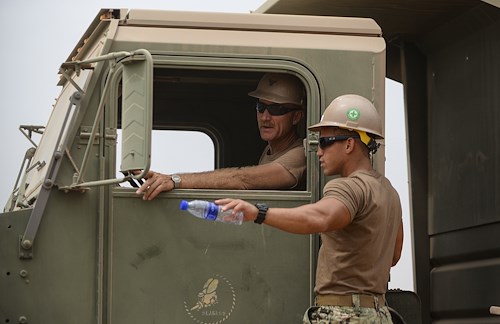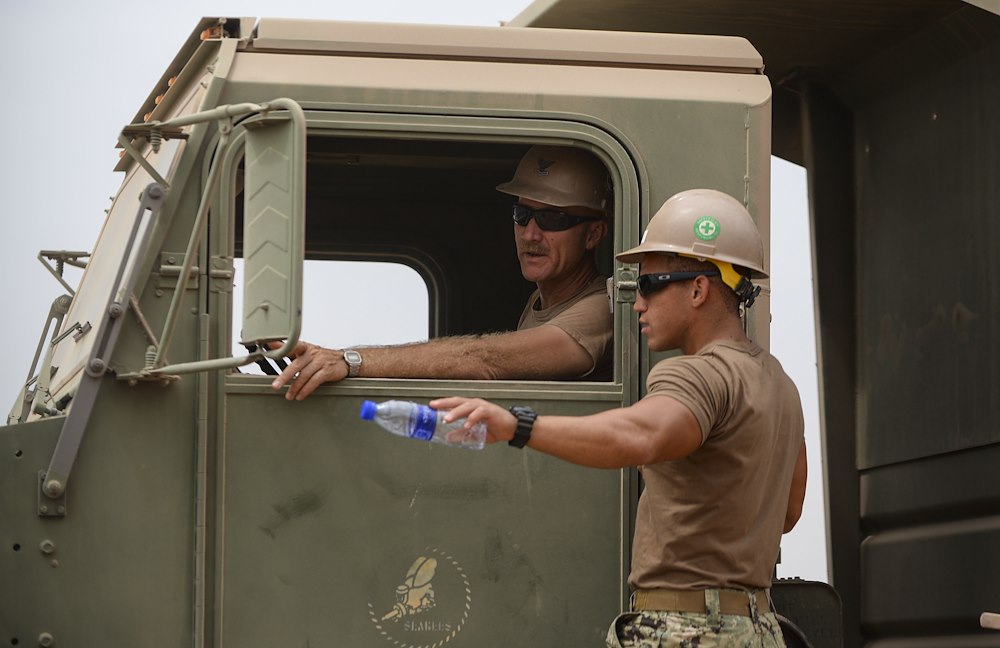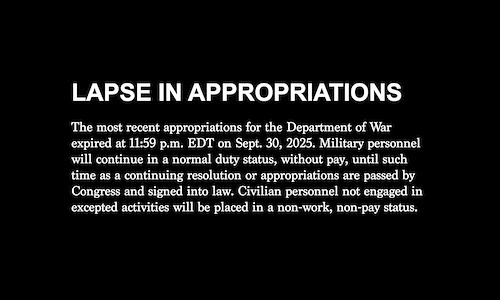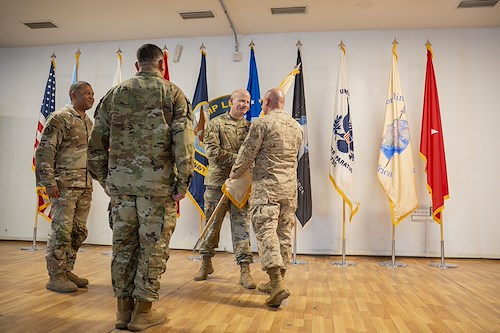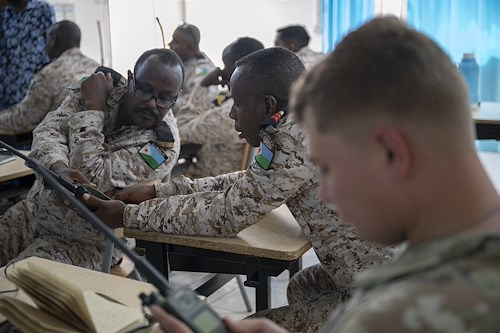Gallery contains 5 images
×
Photo 1 of 5
Combined Joint Task Force - Horn of Africa Image
Petty Officer 2nd Class Tom Ross, Naval Mobile Construction Battalion 22 heavy equipment operator, left, talks to Petty Officer 2nd Class Christian Rivera, NMCB 22 heavy equipment operator during construction of a parking pad at a Djibouti airfield, July 28, 2016. During construction, land was flattened, gravel was laid evenly, flattened again and covered with water to increase density and reduce dust. (U.S. Air Force photo by Staff Sgt. Benjamin Raughton/Released)
Photo by: Staff Sgt. Benjamin Raughton
Photo 2 of 5
Combined Joint Task Force - Horn of Africa Image
Petty Officer 2nd Class Tom Ross, Naval Mobile Construction Battalion 22 heavy equipment operator, drives a water truck over a gravel parking pad while Petty Officer 2nd Class Christian Rivera, NMCB 22 heavy equipment operator and team lead, watches his work at a Djibouti airfield, July 28, 2016. The water fell through the gravel, further compacting the surface and reducing dust. (U.S. Air Force photo by Staff Sgt. Benjamin Raughton/Released)
Photo by: Staff Sgt. Benjamin Raughton
Photo 3 of 5
Combined Joint Task Force - Horn of Africa Image
A dump truck releases gravel onto the ground to further construction of a parking pad at a Djibouti Airfield, July 28, 2016. Logistical delays, such as gravel delivery, occasionally delayed construction, but the Seabees completed the project ahead of schedule. (U.S. Air Force photo by Staff Sgt. Benjamin Raughton/Released)
Photo by: Staff Sgt. Benjamin Raughton
Photo 4 of 5
Combined Joint Task Force - Horn of Africa Image
Petty Officer 3rd Class Collins Scheffer, Naval Mobile Construction Battalion 133 heavy equipment operator, left, talks to Petty Officer 2nd Class Christian Rivera, NMCB 22 heavy equipment operator, while operating a grader during construction of a parking pad at a Djibouti airfield, July 28, 2016. The grader is used to evenly spread gravel to a three-inch height during construction. (U.S. Air Force photo by Staff Sgt. Benjamin Raughton/Released)
Photo by: Staff Sgt. Benjamin Raughton
Photo 5 of 5
Combined Joint Task Force - Horn of Africa Image
Petty Officer 1st Class Joseph Peters, Naval Mobile Construction Battalion 133 heavy equipment operator, drives a roller over gravel during construction of a parking pad at a Djibouti Airfield, July 28, 2016. The project included parking pads for multiple vehicles and a road that allows fire trucks and emergency crews quicker access to different parts of the airfield, thereby cutting down critical response time. (U.S. Air Force photo by Staff Sgt. Benjamin Raughton/Released)
Photo by: Staff Sgt. Benjamin Raughton
U.S. Navy Seabees from Naval Mobile Construction Battalions 22 and 133 completed a logistics support area project at a nearby airfield July 28, 2016.
The project included parking pads for multiple vehicles and a road that allows fire trucks and emergency crews quicker access to different parts of the airfield, thereby cutting down critical response time.
“You name it – any vehicle will be able to operate on it without any weight restriction,” said Petty Officer 1st Class Joseph Peters, NMCB 133 heavy equipment operator. “It will be heavy-duty enough that they can bring in tractor-trailers with supplies [and] wide enough so fire trucks can turn without having to make multiple-point turns. No restrictions. It’s all open-access roads.”
The new parking pad will also give current facilities more breathing room for personnel by allowing fire trucks to park outside, giving them more real estate inside their containment area, among other benefits such as dust control.
“The main reason is to get the fire station out from inside of the explosive accumulation point area. That way they can react if there’s an issue with the ammo bunker,” Peters said.
The road’s main section is 25 feet wide, with the road section near the fire department being 35 feet wide to allow the truck to turn more easily. In total, the Seabees constructed around 1,500 feet of roadway.
In the project’s early stage, one obstacle in particular proved to be a formidable challenge. Namely, a massive five-ton boulder made of basalt— an extremely heavy type of volcanic rock.
“Toward the end of May, as we were cleaning off the hillside, it was mostly large boulders,” Peters said. “One wouldn’t move at all and we had to excavate around it.”
The excavation took three days of work to reach the bottom of the boulder.
“We weren’t able to push it out of the ground. We had to get all the way down to the bottom of it and push it straight across the ground,” he said.
Without the excavation, even the team’s massive D9 bulldozer was unable to move it.
“It was so big that one rock was basically all the D9 could push,” said Petty Officer 2nd Class Tom Ross, an NMCB 22 heavy equipment operator who excavated and ultimately removed the boulder.
“Once I got the rest of the material out of the way, I was able to get started moving out of the area so we could put in the fire department pad,” he said. “The rock out here is extremely tough. It’s tough on the equipment.”
With the boulder out of the way, construction continued on the road, allowing a faster route for emergency crews to save lives and give airfield personnel more room to work.

